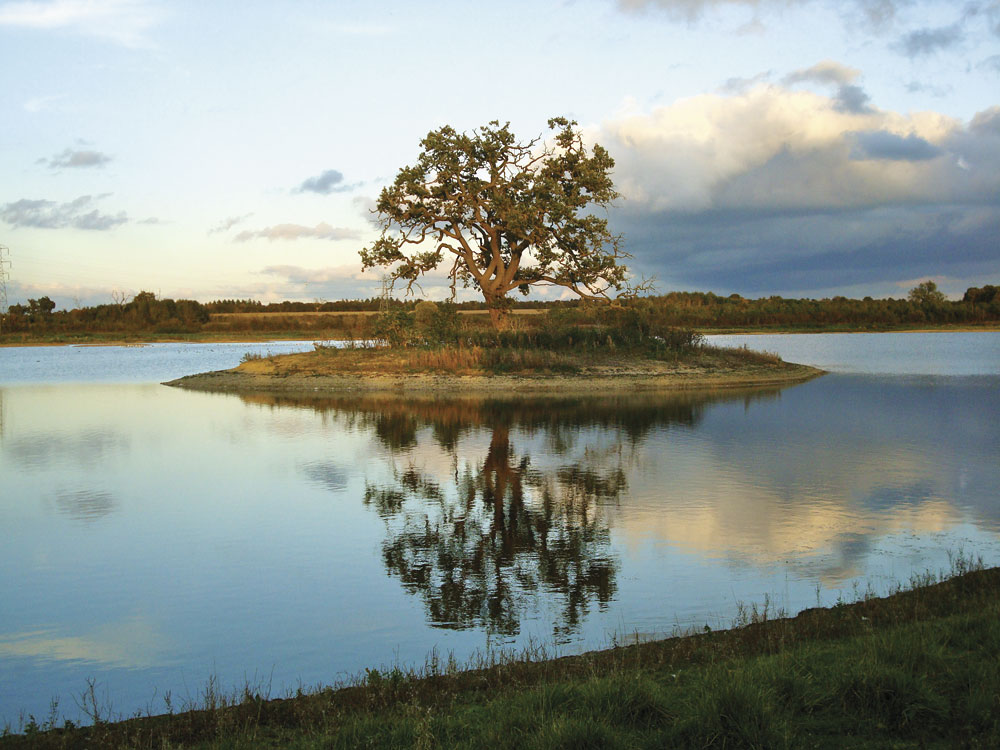From Quarry To Nature Reserve

Oxfordshire’s newest nature reserve opens its gates to the public
The launch of the Rushy Common Nature Reserve at Ducklington, near Witney, marks a boost not just for local nature lovers, but also for quarry operators Smiths Bletchington who created it as part of their long-term commitment to restoration at Gill Mill Quarry.
Local councillors and others who had contributed to the project gathered on 26 May 2011 to celebrate its successful completion. It was also a day of personal triumph for Smiths’ chairman, John Smith, who was determined when Gill Mill Quarry opened 21 years ago, that it would achieve high standards and have minimal impact on its neighbouring communities.
‘I am very proud that we have reached another landmark in the progressive working and restoration of Gill Mill,’ he said. ‘Rushy Common is a great achievement and there will be more to come as we progress.’
The company had already won a national award for restoration of an earlier phase to create a fishing lake. But the 22ha Rushy Common reserve marks a step change in approach by offering wildlife not just a picturesque lake, but a patchwork of other habitats, including shallows, islands, beaches, spits, ponds and scrapes. More than 80 bird species have already been recorded ranging from peregrine falcons and buzzards to oystercatchers and little ringed plovers, while the freshwater habitat is said to be one of the most diverse in the Windrush valley.
The site’s natural beauty has been captured on a video which can be viewed on the company’s website (www.smithsbletchington.co.uk).
While wildlife needs are the priority, people can enjoy the reserve from a large bird hide and there are opportunities to enjoy circular walks around the more recently restored 5ha Tar Lakes using paths that are suitable for people with disabilities.
Work on the project has been co-ordinated by Smiths’ planning and estates manager, Martin Layer, who told visitors at the launch event that particular credit was due to the original family vision, to quarry manager Peter Steffens and his team, and to an army of local craftspeople, businesses and experts who had all contributed to the new landscape.
‘We shouldn’t forget that not long ago both Rushy Common and Tar Lakes were holes in the ground created by gravel extraction but that with imaginative and careful design from the outset, quarrying can deliver fantastic outcomes for both biodiversity and public access,’ he said.
Alison Hopewell of the Lower Windrush Valley Project (LWVP) has been closely involved in the detailed planning of the new nature reserve. ‘This has been a real team effort with Smiths working closely with Oxfordshire County Council, West Oxfordshire District Council and many different environmental specialists to ensure this new site benefits both wildlife and local people,’ she commented.
The Rushy Common Nature Reserve and Tar Lakes are now key features along the LWVP’s emerging Windrush Path between Witney and Newbridge. The riverside stretch between Ducklington and Hardwick has been created by Smiths on a permissive basis.
For further information about Rushy Common, Tar Lakes or the LWVP, contact Alison Hopewell on tel: (01865) 815426; or visit: www.oxfordshire.gov.uk/lowerwindrushvalleyproject


